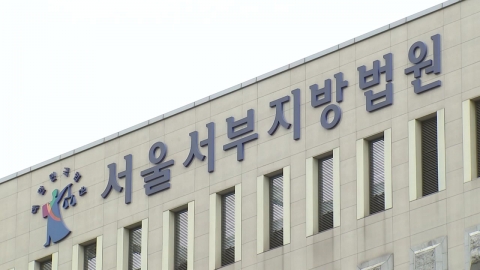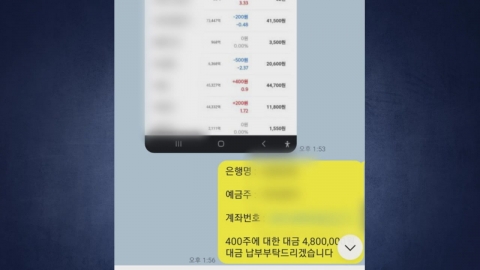[News Now] "Thinking like a backward country"...Three suffocation deaths during a vehicle test at Hyundai Motor's Ulsan plant.
■ Host: Anchor Jeong Ji-woong
■ Starring: Lee Dong-gyu, President of the Korea Safety Experts Association
* The text below may differ from the actual broadcast content, so please check the broadcast for more accurate information. Please specify [YTN NewsNOW] when quoting.
[Anchor]
Ask a professional about a hot issue. It's an issue call. During a vehicle test at Hyundai Motor's Ulsan plant, three researchers died of nausea.
The police secured a factory official's statement that the three people working in an enclosed space were boring when they checked because they could not see them. Among the researchers who died, one in his 30s and 40s belonged to Hyundai Motor, and the other in his 20s belonged to a partner company.The place where the accident occurred was a place where a vehicle was put in and an extreme environment was created to check the performance, and researchers were found to be in the driver's seat, passenger seat, and back seat of the vehicle. Immediately after the accident, the Ministry of Employment and Labor dispatched a labor inspector to check the details of the accident and ordered the suspension of work.
Through a joint inspection today, we also investigated whether it violated the Serious Disaster Punishment Act. Hyundai Motor's Ulsan plant is subject to the Critical Accident Punishment Act with more than 10 regular workers. Since the enforcement of the law in 2022, Hyundai has had three deaths so far and five people have died.Let's talk about
with an expert. Lee Song-gyu, president of the Korea Safety Experts Association, is here.
[Lee Song Kyu]
Hello, I'm Lee Song Kyu.
[Anchor]
I don't think I've heard for the first time that researchers suffocated while testing vehicles.Is there a precedent?
[Lee Song Kyu]
That's right. There is extremely rare data about deaths while performing vehicle performance tests indoors. However, in Hyundai Motor Company, indoor areas are very dangerous to gas, so you must have known all of these risks, but it seems that this accident occurred because these measures were insufficient. In particular, performance tests are conducted outdoors, and as you said earlier, the components of exhaust gas and the degree of emission regulation must be indoors, so safety measures were essential in very dangerous situations indoors, but this regret arises.
[Anchor]
Then, what do you estimate as the cause of this accident?
[Lee Song Kyu]
Police and Hyundai say that the ventilation system in the indoor space called the Chamber did not work. The chamber's own ventilation system is said to be a problem now, but more importantly, I think it's important to know why the chamber's indoor exhaust emissions were discharged. Isn't there an exhaust pipe in the car engine when performing a performance test? It is supposed to be discharged out of the chamber using an exhaust duct in the exhaust cylinder. However, I wonder if the exhaust gas leaked from the exhaust duct. This is possible. Another thing is that there is an exhaust duct, but you need another intake valve to operate the engine. However, due to this problem in the intake valve, normal oxygen supply was not possible, so carbon dioxide could be generated due to incomplete combustion, and carbon dioxide and nitrogen oxides caused suffocation.
[Anchor]
I heard that the Ministry of Employment and Labor is investigating whether it violates the Serious Accident Punishment Act and the Occupational Safety and Health Act in this regard. Will this be applicable?
[Lee Song Kyu]
That's right. The Occupational Safety and Health Act has been investigating any deaths until now. As the anchor said earlier, this factory is subject to the Serious Disaster Punishment Act. It's because it's been two years since it was implemented. Then, the Occupational Safety and Health Act has been required to punish the person in charge, safety officer, and safety general manager as the person in charge, but the Serious Accident Punishment Act is a regulation that punishes other top managers, presidents, or representatives. Therefore, it will be a law that punishes the CEO if he or she takes insufficient measures for safety or securing health care. Therefore, Hyundai Motor is now subject to the Serious Accident Punishment Act, so the key is whether managers are obligated to secure safety or not.
[Anchor]
I'm also very curious about whether or not the serious accident punishment law can be applied to the charge of manslaughter. What do you think?
[Lee Song Kyu]
If you apply the precedent now, it is believed that if a death accident occurs because it is not done in a place where a safety device is required, a manslaughter charge will be applied. At the same time, it is predicted that heavy punishment will be imposed because the Occupational Safety and Health Act applies at the same time.
[Anchor]
It's a very unfortunate accident. We will also deliver news on today's joint inspection as soon as we hear it. We analyzed the suffocation accident at Hyundai Motor's Ulsan plant with Lee Song-kyu, president of the Korea Safety Experts Association. Thank you, president of the association.
[Lee Song Kyu]
Thank you.
※ 'Your report becomes news'
[Kakao Talk] YTN Search and Add Channel
[Phone] 02-398-8585
[Mail] social@ytn.co.kr
■ Starring: Lee Dong-gyu, President of the Korea Safety Experts Association
* The text below may differ from the actual broadcast content, so please check the broadcast for more accurate information. Please specify [YTN NewsNOW] when quoting.
[Anchor]
Ask a professional about a hot issue. It's an issue call. During a vehicle test at Hyundai Motor's Ulsan plant, three researchers died of nausea.
The police secured a factory official's statement that the three people working in an enclosed space were boring when they checked because they could not see them. Among the researchers who died, one in his 30s and 40s belonged to Hyundai Motor, and the other in his 20s belonged to a partner company.The place where the accident occurred was a place where a vehicle was put in and an extreme environment was created to check the performance, and researchers were found to be in the driver's seat, passenger seat, and back seat of the vehicle. Immediately after the accident, the Ministry of Employment and Labor dispatched a labor inspector to check the details of the accident and ordered the suspension of work.
Through a joint inspection today, we also investigated whether it violated the Serious Disaster Punishment Act. Hyundai Motor's Ulsan plant is subject to the Critical Accident Punishment Act with more than 10 regular workers. Since the enforcement of the law in 2022, Hyundai has had three deaths so far and five people have died.Let's talk about
with an expert. Lee Song-gyu, president of the Korea Safety Experts Association, is here.
[Lee Song Kyu]
Hello, I'm Lee Song Kyu.
[Anchor]
I don't think I've heard for the first time that researchers suffocated while testing vehicles.Is there a precedent?
[Lee Song Kyu]
That's right. There is extremely rare data about deaths while performing vehicle performance tests indoors. However, in Hyundai Motor Company, indoor areas are very dangerous to gas, so you must have known all of these risks, but it seems that this accident occurred because these measures were insufficient. In particular, performance tests are conducted outdoors, and as you said earlier, the components of exhaust gas and the degree of emission regulation must be indoors, so safety measures were essential in very dangerous situations indoors, but this regret arises.
[Anchor]
Then, what do you estimate as the cause of this accident?
[Lee Song Kyu]
Police and Hyundai say that the ventilation system in the indoor space called the Chamber did not work. The chamber's own ventilation system is said to be a problem now, but more importantly, I think it's important to know why the chamber's indoor exhaust emissions were discharged. Isn't there an exhaust pipe in the car engine when performing a performance test? It is supposed to be discharged out of the chamber using an exhaust duct in the exhaust cylinder. However, I wonder if the exhaust gas leaked from the exhaust duct. This is possible. Another thing is that there is an exhaust duct, but you need another intake valve to operate the engine. However, due to this problem in the intake valve, normal oxygen supply was not possible, so carbon dioxide could be generated due to incomplete combustion, and carbon dioxide and nitrogen oxides caused suffocation.
[Anchor]
I heard that the Ministry of Employment and Labor is investigating whether it violates the Serious Accident Punishment Act and the Occupational Safety and Health Act in this regard. Will this be applicable?
[Lee Song Kyu]
That's right. The Occupational Safety and Health Act has been investigating any deaths until now. As the anchor said earlier, this factory is subject to the Serious Disaster Punishment Act. It's because it's been two years since it was implemented. Then, the Occupational Safety and Health Act has been required to punish the person in charge, safety officer, and safety general manager as the person in charge, but the Serious Accident Punishment Act is a regulation that punishes other top managers, presidents, or representatives. Therefore, it will be a law that punishes the CEO if he or she takes insufficient measures for safety or securing health care. Therefore, Hyundai Motor is now subject to the Serious Accident Punishment Act, so the key is whether managers are obligated to secure safety or not.
[Anchor]
I'm also very curious about whether or not the serious accident punishment law can be applied to the charge of manslaughter. What do you think?
[Lee Song Kyu]
If you apply the precedent now, it is believed that if a death accident occurs because it is not done in a place where a safety device is required, a manslaughter charge will be applied. At the same time, it is predicted that heavy punishment will be imposed because the Occupational Safety and Health Act applies at the same time.
[Anchor]
It's a very unfortunate accident. We will also deliver news on today's joint inspection as soon as we hear it. We analyzed the suffocation accident at Hyundai Motor's Ulsan plant with Lee Song-kyu, president of the Korea Safety Experts Association. Thank you, president of the association.
[Lee Song Kyu]
Thank you.
※ 'Your report becomes news'
[Kakao Talk] YTN Search and Add Channel
[Phone] 02-398-8585
[Mail] social@ytn.co.kr
[Copyright holder (c) YTN Unauthorized reproduction, redistribution and use of AI data prohibited]
Editor's Recomended News
-
Yonsei University's Appeal for Provisional Disposition for Essay was Denied...Solidarity "Immediately appeal"

-
"I'm getting investment for BTS goods"...An agency official who stole 600 million won will be sentenced to prison.

-
"It'll be a hit if it's listed".Actor Dongwon buys 1.5 billion won with fake 'investment success story'

The Lastest News
-
Trash car driver arrested after hitting and killing elementary school student in apartment
-
Cho Kuk Innovation Party Unveils Draft 'Impeachment of President Yoon Suk Yeol'
-
Minjoo seeks to impeach Seoul Central District Prosecutors' Office chief Lee Chang-soo during regular session of the National Assembly
-
Party, Party, and Government Meeting to Check the People's Livelihood Economy the day after tomorrow... "Discussion on How to Protect Small Shareholders




![[Focus Y] Min Heejin's](https://image.ytn.co.kr/general/jpg/2024/1120/202411201452311849_h.jpg)




